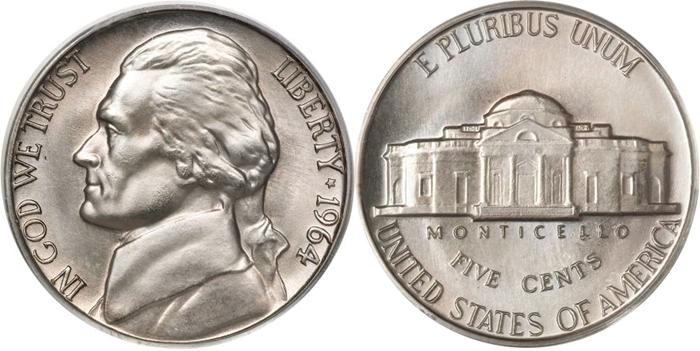
The Jefferson nickel, introduced in 1938, was the third United States portrait coin introduced following the Lincoln cent in 1909 and the Washington quarter in 1932. Under US law, the design of a coin could not be changed more than once every twenty five years. On the day the buffalo nickel had been minted for 25 years, it was discontinued in favor of the Jefferson design. Franklin Roosevelt encouraged the mint to include Thomas Jefferson on a coin.
The Jefferson Nickel Design Contest
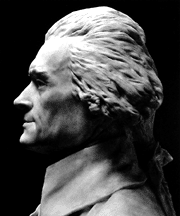
Instead of designing the coin in-house, the mint announced a contest. The winner was a German immigrant, Felix Schlag, who won $1000 for the award. Although Schlag won the contest, his contribution to the design was minimal. For the portrait, he plagiarized the 1789 marble Bust of Thomas Jefferson by French Artist, Jean Antoine Houdon. He added the legally required “Liberty,” “In God we trust,” and the date. On the reverse, was Jefferson’s home, the Monticello. Mintage of the Jefferson nickel began in 1938.
Wartime Jefferson Nickels
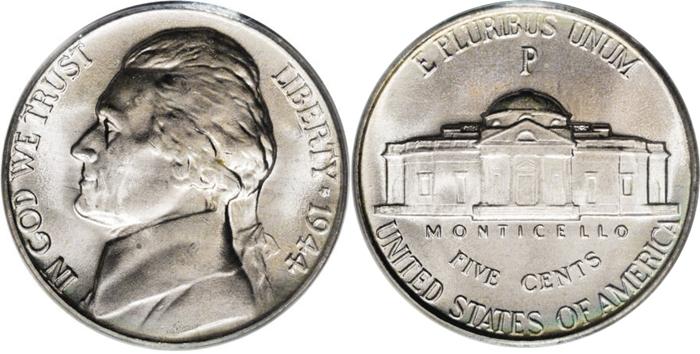
The composition of the nickel was 75% copper and 25% nickel. But with nickel required for World War II, the mint altered the composition to 56% copper, 35% silver and 9% manganese. The silver Jeffersons can be identified by a large mintmark over the Monticello instead of the diminutive mark to the right of the building. Coins minted in Philadelphia had a large P, the first occasion for that mintmark. Between 1942 and 1945, nearly a billion silver Jefferson were struck. Today these coins are hoarded for their silver content.
Counterfeit Jefferson Nickels
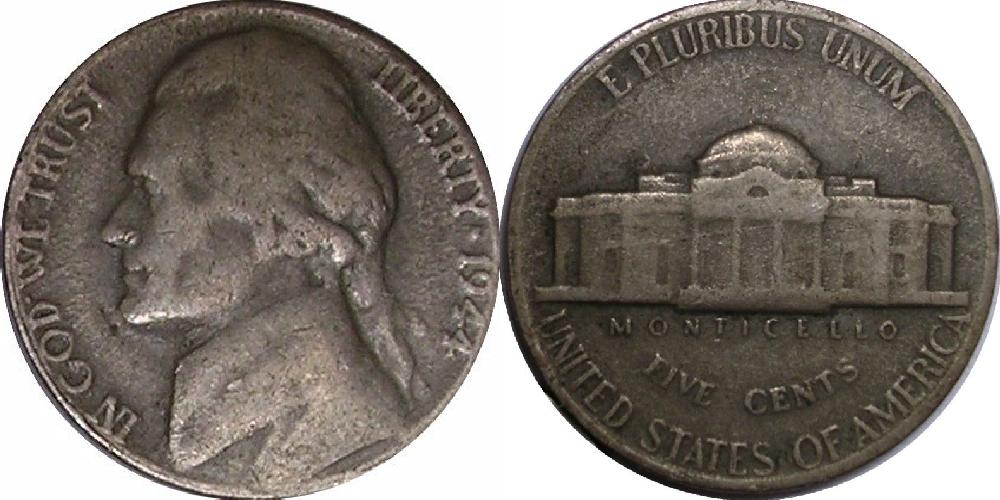
The low denomination nickel may seem like a strange coin to attempt to counterfeit, but in the 1950’s,New Jersey’s Francis Henning produced hundreds of thousands of counterfeit Jefferson nickels, at a production cost of nearly five cents a coin. After enjoying success with a 1939 counterfeit, he produced fake 1944 nickels but neglected the large mintmark over the Monticello. This led to his downfall. As the government closed in, Henning dumped about 200,000 nickels in Philadelphia’s Schuylkill River. Dr. Planchet encourages you to look for them.
Design changes
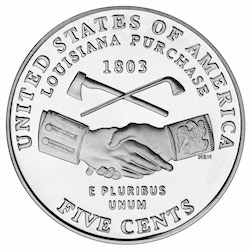
In 2004, the Monticello reverse was replaced by two reverses, one depicting a Keel Boat and the other commemorating the Lousiana purchase. This marked the start of the Westward Journey series. The mint promoted the sale of the coins with uncirculated sets, proof sets, and rolls. Please click here for westward journey nickel purchasing information.
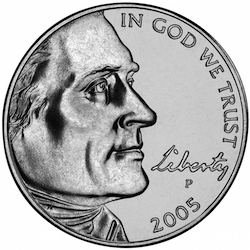
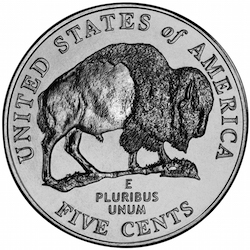
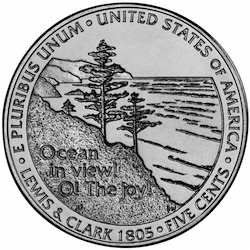
2005 Design Changes
For 2005, the obverse portrait was changed. The reverses depicted a bison and a view of the Pacific Ocean.
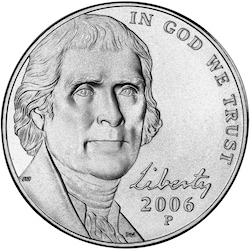
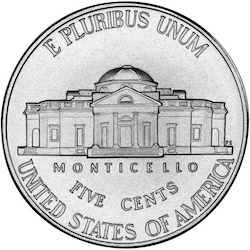
2006 Return to Monticello
In 2006, the original Monticello design was restored for the reverser of the nickel. The portrait of Thomas Jeffesron was changed to a portrait based on a painting by Rembrandt Peale. Now Jefferson looks like a hippie.
Hoarding Nickels
With inflation, the value of the copper and nickel eventually became more than five cents. As a result, many people have begun to hoard nickels. (Note: the current metal value of the nickel can be determined by going to the website: coinflation.com). If the price of copper and nickel rise, the hoarders will presumably make money. If the price of copper and nickel decline, the hoarders will not lose money, since the nickel will still have a floor value of five cents. The mint is currently working on a cheaper way of manufacturing nickels (which will further increase hoarding).
Acknowledgement: Many images on this page are courtesy of the United States Mint.